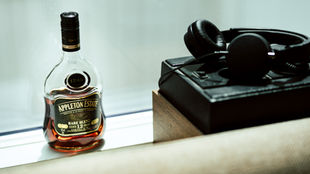6 Key Differences in Buying Behavior: Businesses vs. Consumers
- Anne Thompson

- May 20, 2024
- 4 min read
Building and maintaining relationships with suppliers is crucial in B2B transactions. Trust, reliability, and long-term partnerships are key factors in business purchases.

Buying behavior varies significantly between businesses and consumers. Understanding these differences can help you tailor your sales strategy effectively. ]
We'll explore six key differences and introduce two buying behavior models to optimize your sales process. Let's dive in with a witty, friendly tone and useful insights!
Revolutionize Your Ad Campaigns! Are you tired of constantly worrying about your ad budget? Check out our monthly ad subscription plan. Learn more
1. Decision-Making Process
Businesses: Business purchases often involve multiple stakeholders, including procurement teams, managers, and executives. This makes the decision-making process longer and more complex. Each stakeholder has specific requirements and concerns, leading to a thorough evaluation of options before making a purchase.
Consumers: Consumers typically make purchasing decisions individually or with limited input from family or friends. The process is faster and more emotionally driven, often influenced by personal preferences, brand loyalty, and immediate needs.
Example: Consider the purchase of software. A business might take months to evaluate different solutions, involve various departments, and seek approval from the top management. In contrast, a consumer might decide to buy a new phone app within minutes based on user reviews and personal preference.
2. Purchase Volume and Frequency
Businesses: Business purchases usually involve larger quantities and higher costs. They often negotiate bulk discounts and establish long-term relationships with suppliers to ensure consistent supply and favorable terms.
Consumers: Consumers buy in smaller quantities and more frequently. Their purchases are more sporadic and based on immediate needs or desires.
Example: A company might purchase office supplies in bulk once a month to benefit from bulk pricing, while a consumer buys stationery items as needed, typically in smaller quantities.
3. Rational vs. Emotional Buying
Businesses: Business buying is primarily rational. Decisions are driven by data, ROI, and the overall impact on the company's operations. Businesses analyze the cost-effectiveness, efficiency, and benefits of a product before purchasing.
Consumers: Consumers' buying behavior is often influenced by emotions. They might buy a product because it looks appealing, makes them feel good, or because they identify with the brand's image.
Example: A business might choose a fleet of vehicles based on fuel efficiency, maintenance costs, and total cost of ownership. A consumer might buy a car based on its design, color, and how it makes them feel.
4. Relationship Focus
Businesses: Building and maintaining relationships with suppliers is crucial in B2B
transactions. Trust, reliability, and long-term partnerships are key factors in business purchases.
Consumers: While brand loyalty exists, consumers are more likely to switch brands based on convenience, price, or new offerings. Their relationships with sellers are often transactional and less personal.
Example: A business might stick with the same office furniture supplier for years due to reliable service and negotiated pricing. A consumer might change grocery stores based on weekly deals and convenience.
5. Buying Motivation
Businesses: The motivation behind business purchases is often linked to improving efficiency, productivity, and profitability. Businesses look for solutions that can enhance their operations and provide a competitive edge.
Consumers: Consumers are motivated by a mix of needs and desires. They seek products that improve their quality of life, offer enjoyment, or fulfill a specific need.
Example: A business invests in a new CRM system to streamline customer management and boost sales. A consumer buys a smartwatch to track fitness goals and stay connected.
6. Negotiation and Customization
Businesses: Negotiation is a common practice in B2B transactions. Businesses seek customized solutions and favorable terms that meet their specific needs. This can include tailored products, services, or pricing models.
Consumers: Consumers have limited room for negotiation and customization. They typically accept the price and product as offered, though some customization options like personalized items are available.
Example: A business might negotiate a custom software solution with specific features and a support package. A consumer buys software off the shelf with limited customization options.
Buying Behavior Models to Apply
1. The Buyer Decision Process Model This model outlines the steps consumers take before, during, and after making a purchase: Need recognition, information search, evaluation of alternatives, purchase decision, and post-purchase behavior. For businesses, this model can be expanded to include multiple stakeholders and longer evaluation periods.
2. The Business Buying Decision Process Model This model includes the following stages: Problem recognition, general need description, product specification, supplier search, proposal solicitation, supplier selection, order-routine specification, and performance review. Understanding this model helps in tailoring the sales approach to address each stage effectively.
Real Case Studies
Case Study 1: General Electric (GE) GE needed to upgrade its IT infrastructure. The decision involved multiple departments, a lengthy evaluation process, and several rounds of negotiations with suppliers. They ultimately selected a provider based on cost-effectiveness, support services, and long-term partnership potential.
Case Study 2: Coca-Cola Coca-Cola decided to launch a new beverage product. The decision was driven by market research, consumer preferences, and brand positioning. The process was swift, and the decision-making was more centralized compared to a typical B2B purchase.
"Businesses spend 2-3 times longer evaluating suppliers compared to consumers."
Understanding the differences between business and consumer buying behaviors is crucial for tailoring your sales strategy. By applying the right buying behavior models, you can better address the needs of your target audience, whether they are businesses or individual consumers.
.png)














Comments